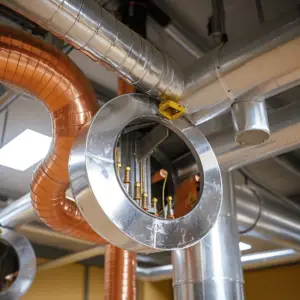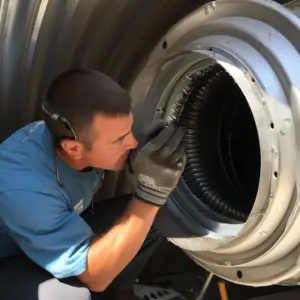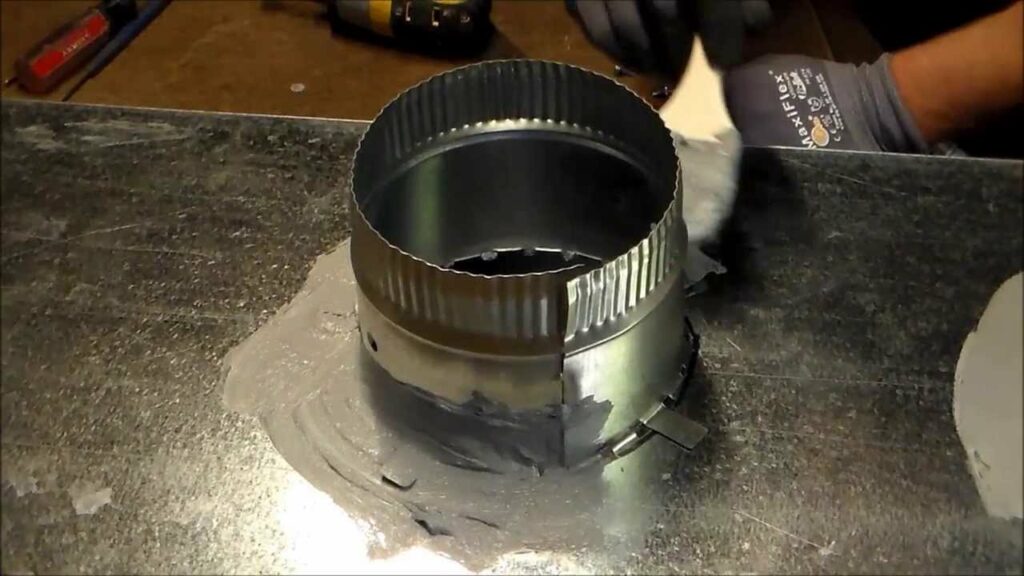HVAC Duct Start Collars and Take-Offs, Start collar and take-off are terminologies that are often used interchangeably. Start collars are an economical way for starting a new duct from your supply or return plenum. They are used to connect a flat surface like a duct board to a round pipe duct or insulated flexible duct.
On the other hand, a take-off in HVAC is used to cut into a plenum or rectangular duct to start duct runs. They are available in various designs such as double take off, side takes off, and to take off. Likewise, start collars are available in a wide selection with designs and nominal sizes that make them suitable for most HVAC utilization.
Table of Contents
Start Collar Vs Take Off: Overview

The first step in running a new HVAC, heating, or air conditioning duct is to install a start collar into the existing duct or plenum. So in this section, we will explain how to get around this process for agreeable results.
Using sheet metal snips cut the proper size hole into your plenum. You need to bend every other tab on the start collar out 90 degrees. Simply insert the remaining straight tabs into the hole just made and then bend those 90 degrees to the inside of the hole to hold the collar in place. Note that this is a simple process and you don’t need sheet metal screws are necessary with this application method.
HVAC Duct Start Collars and Take-Offs recommended that you seal around the connection from the start collar to the plenum with a duct to prevent air leakage. This will also help to prevent air leakage and reduce your energy bills.
Hot to Install Start Collar
Once your start collar is installed, you can now proceed and attach the flex duct fitting or galvanized duct to continue your duct run. You can find sheet metals ducts fittings and accessories needed to complete any HVAC project you may be working on. Some companies even custom-design specific sizes, shapes,s, and quality of ducts to match your conveniences.
Note that sound start collar and spin-in round collars are meant for the transition from a flat surface to a round pipe or insulated flex duct. They are also designed for easy installation and are available in sizes from 3” to 20”.
Duct start collars and duct offset start collars are meant for transition for duct board plenums or a flat surface to the square duct. Duct start collars are available in sizes from 8” x 8” to 24” x 10” and other sizes for different applications. Duck offset start collars, meanwhile are available in sizes from 8” x 10” to 10” x 20” (for starting side) and from 8” x 8” to 24” x 8” (for the ending side).
Stack start collar is used for transitioning from plenums, whether duct board or lined or flat surface to square stack. The stack start collar is usually available in sizes 2-1/4” x 12” to 3-1/4” x 14” and other sizes for varied applications.
Round start collar with damper and spin-in round collar with damper are used for transition from a flat surface to round pipe as well as insulated flex duct with damper for flow control. And they are also available in size from 3” to 20”.
How to Install Take Off
Whether you’re considering adding new heat runs in a basement or changing the layout of an existing HVAC system, you will most likely be working with a round metal ductwork pipe. These tips should help make the project run that much smoother.
The point here is to raise your awareness of the ductwork and how it affects air delivery throughout constrictive duct fittings. It also shows how spacing take-offs for branch runs utilizing the Two-Foot Rule will alleviate unnecessary pressure. We suggest that you use your company’s duct installation procedure during installation to fix the problem.
First, you need to know where to put the take-off in the trunk duct. Although most installers know that an outlet should never be put in the end cap of a duct system, the question still remains; where do you put it? Well, for greater overall satisfaction and senesce of a job well done, it’s best to put a take-off should be put two feet from the end.
The type of installation common in your area may not accommodate certain arrangements. For instance, HVAC Duct Start Collars and Take-Offs have a system with remote plenums or an extended plenum that is 6 feet or less with many branch runs, the “two feet from the end” rule may not apply.
Issue in duct renovation

There are various ways to address this issue in duct renovation. For instance, you can move the take-off upstream by 24” inches which are rather labor-intensive. The second means is to remove the end cap and add two feet of duct and then re-attach the end cap. The latter is usually simpler.
Note that side take-off and top take-off are typically used to cut into a plenum or rectangular duct to start a trunk line or branch-like runs. They allow transition from an air plenum or square duct to a round pipe. You can find both designs in varied sizes from 6” x 6” to 12” x 12” and 6” to 8” for the ending side.
Double takeoff, like the name suggests, is used to cut into a rectangular duct or plenum to start two round duct runs. It is meant for a transition from air plenum or square duct to two round pipes and is available in size from 6”x6” to 12”x 12” (for starting side) and from 6” to 8” (for the ending side).
There is also the transition takeoff which is often used for transition from plenums, whether duct board or lined or flat surface to square stack duct. You can find this in sizes 14” x 8” to 30” x 8” (for starting side) and 14” x 8” to 30” x 8” (for the ending side) and other sizes.


